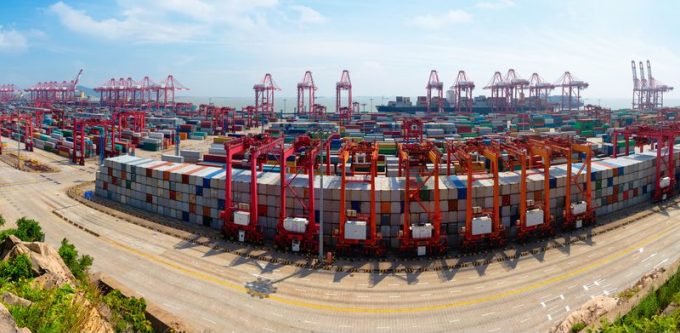Loadstar Podcast | November 2024 | Trump tariffs, TIACA insights, and looming 2025 capacity crunches
Host Mike King explores the latest developments in airfreight and global trade policy on this ...
BA: WIND OF CHANGEMAERSK: BULLISH CALLXPO: HEDGE FUNDS ENGINEF: CHOPPING BOARDWTC: NEW RECORDZIM: BALANCE SHEET IN CHECKZIM: SURGING TGT: INVENTORY WATCHTGT: BIG EARNINGS MISSWMT: GENERAL MERCHANDISEWMT: AUTOMATIONWMT: MARGINS AND INVENTORYWMT: ECOMM LOSSESWMT: ECOMM BOOMWMT: RESILIENCEWMT: INVENTORY WATCHDSV: GREEN LIGHT
BA: WIND OF CHANGEMAERSK: BULLISH CALLXPO: HEDGE FUNDS ENGINEF: CHOPPING BOARDWTC: NEW RECORDZIM: BALANCE SHEET IN CHECKZIM: SURGING TGT: INVENTORY WATCHTGT: BIG EARNINGS MISSWMT: GENERAL MERCHANDISEWMT: AUTOMATIONWMT: MARGINS AND INVENTORYWMT: ECOMM LOSSESWMT: ECOMM BOOMWMT: RESILIENCEWMT: INVENTORY WATCHDSV: GREEN LIGHT

The recent upsurge in spot rates is beginning to affect long-term contracts and, over the past few months, something of a two-tier market appears to have developed, according to Xeneta’s shipping analyst, Emily Stausboll.
She noted yesterday that the spot rate climb, propelled by the Red Sea crisis effect on capacity and what appears to be an early peak season, had led carriers to treat forwarder clients very differently from the major BCOs with which they contract directly.
This was shown by the very different trends seen in spot and long-term rate indices, she said.
“When looking at long-term contracts signed within the past three months on the Far East exports index, freight forwarders have seen an increase in rates, compared with January. Meanwhile, shippers have been enjoying lower rates.
“To put this shift in market dynamics into context using the Far East to Mediterranean trade; at the start of 2024, forwarders were getting long-term rates around $540 per 40ft lower than shippers. Now they are paying $850 per 40ft more,” she said.
A series of forwarders have told The Loadstar over the past four weeks that their named account allocations were being cut as spot rates rose and carriers prioritised higher-paying cargo.
In effect, said Ms Strausboll, this meant “most carriers have clearly chosen to prioritise relationships with shippers over freight forwarders.
“That leaves some forwarders fighting to get any kind of long-term rate from carriers – and, even if they are successful, they will be paying more than shippers.
“They also face the prospect of being squeezed even further through surcharges and premium services to secure guaranteed capacity,” she added.
While she suggested that under the current market dynamic, the largest BCOs were likely to see their allocations largely maintained, “due to carriers needing to maintain good relationships with their most important customers”, the same would not be true for smaller shippers. They were more likely to employ forwarders, she explained, and “the spread between the long- and short-term markets presents a more clear and present threat to their supply chains”.
She added: “Nowhere is the growing spread between long- and short-term rates more evident than on the Far East to North Europe trade,” and noted that the Asia-North Europe portion of the Global Xeneta Shipping Index, which measures all valid long-term contracts, declined 3.6% in May, after a 9.2% increase in April.
On the spot market, rates from the Far East to North Europe increased by 71% between 30 April and 1 June.
However, Ms Strausboll warned that the current spread between long- and short-term rates could narrow should the Red Sea crisis and recent high demand persist and port congestion spread. Then next year’s contract negotiations – which traditionally begin in November for the Asia-Europe trades, could be very different from this year.
“If spot rates remain elevated when shippers – even the larger ones – enter negotiations for new long-term contracts then they too could be looking anxiously at the short-term market,” she said.
Comment on this article